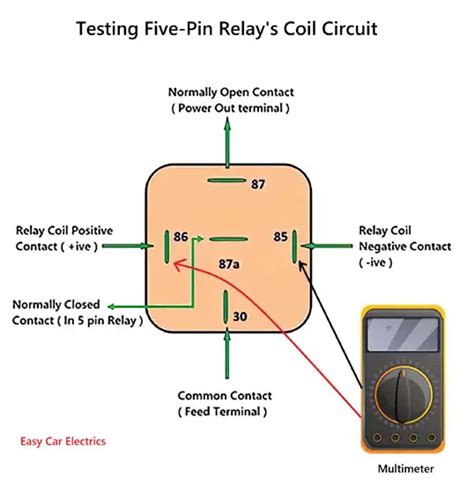Get Your Horn Working Again: The Simple Relay Test
A car horn that's gone silent can be a frustrating and even dangerous problem. Before you start tearing apart your dashboard or calling a mechanic, there's a simple, inexpensive test you can perform: checking the horn relay. This small electrical component acts as a switch, allowing a small current to control a much larger current needed to power the horn. Often, a faulty relay is the culprit behind a non-functioning horn, and replacing it is a quick and easy fix. This guide will walk you through a simple relay test and explain how to replace it if necessary.
Understanding the Horn Relay's Role
Your car's horn system is surprisingly simple. It consists of the horn itself, a fuse, a switch (your steering wheel), some wiring, and the relay. When you press the horn button, the steering wheel's switch closes a circuit. This small current isn't enough to power the horn directly; that's where the relay comes in. The relay acts as an intermediary, using the small current to activate a much larger current, supplying the power needed for the horn to blare. Think of it like a high-powered electrical switch controlled by a smaller trigger.
How to Locate Your Horn Relay
The location of your horn relay varies depending on the make and model of your vehicle. Consult your car's owner's manual for the precise location. Often, it's located within the fuse box, which might be under the hood, in the dashboard, or under the rear seat. The relay itself is usually a small square or rectangular component with several pins or terminals. Some fuse boxes clearly label the horn relay; others may require some detective work.
What if I Can't Find the Horn Relay in My Fuse Box?
Some vehicles might have the horn relay integrated into another control module or located in a less accessible area. In these situations, checking your owner's manual is crucial. If you're still unable to locate it, you might need to consult a repair manual specific to your car model, or seek professional help.
The Simple Relay Test: A Step-by-Step Guide
This test requires a multimeter and basic electrical knowledge. If you're uncomfortable working with electricity, it's best to consult a mechanic.
Tools Needed:
- Multimeter (set to continuity or resistance testing)
- Screwdriver (appropriate size for your fuse box)
Steps:
- Disconnect the Relay: Carefully remove the horn relay from its socket in the fuse box.
- Visual Inspection: Check the relay for any obvious signs of damage, such as burned contacts, melted plastic, or loose connections.
- Continuity Test: Set your multimeter to the continuity test setting (usually represented by a diode symbol). Touch the probes to the appropriate terminals on the relay. The exact terminals vary depending on the relay type, so refer to your relay's specifications or a wiring diagram. Generally, you'll be testing the coil (control circuit) and the switch contacts. You should get a "continuity" beep indicating a closed circuit if the relay is good. If you don't get a beep, the relay is likely faulty.
- Resistance Test (Alternative): If you don't have a continuity tester, you can perform a resistance test. The specific resistance values will vary depending on the relay, but a reading significantly different from the manufacturer's specification indicates a problem.
Replacing the Horn Relay
If the relay test reveals a faulty component, replacing it is straightforward.
- Purchase a Replacement: Find a relay that matches the specifications of the original (often printed on the relay itself). Auto parts stores usually stock these inexpensive components. Make sure to get the correct amperage rating.
- Installation: Carefully install the new relay back into its socket in the fuse box, ensuring it clicks securely into place.
- Test the Horn: Try your horn to confirm that it's working correctly.
Troubleshooting Beyond the Relay
If replacing the relay doesn't solve the problem, other potential issues could be at play:
H2: Is it the Horn Itself?
A faulty horn is a possibility. Testing this requires directly applying power to the horn (after disconnecting it from the circuit). This involves understanding your car's wiring and should only be done with appropriate safety measures in place or by a professional.
H2: Could a Blown Fuse Be the Culprit?
Check the horn fuse in your fuse box. If it's blown, replace it with a fuse of the correct amperage rating.
H2: What About Wiring Problems?
Damaged or loose wiring could also prevent the horn from functioning. Inspect the wiring leading to the horn and the relay for any breaks, corrosion, or loose connections.
This guide provides a simple starting point for diagnosing a non-functioning car horn. Remember, safety is paramount. If you're not comfortable working with car electronics, seek professional help. A simple relay test can often save you time and money, but don't hesitate to consult a qualified mechanic if needed.

